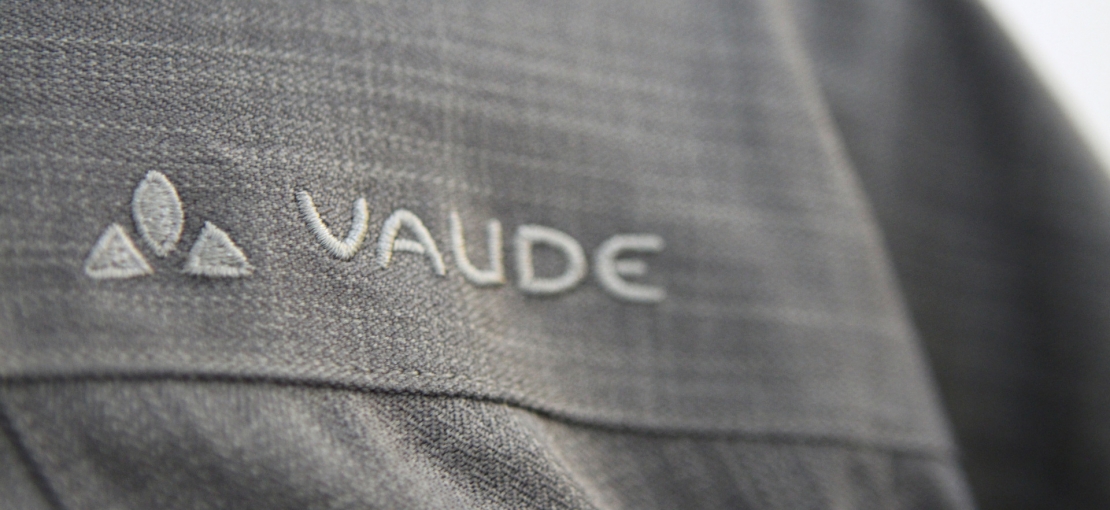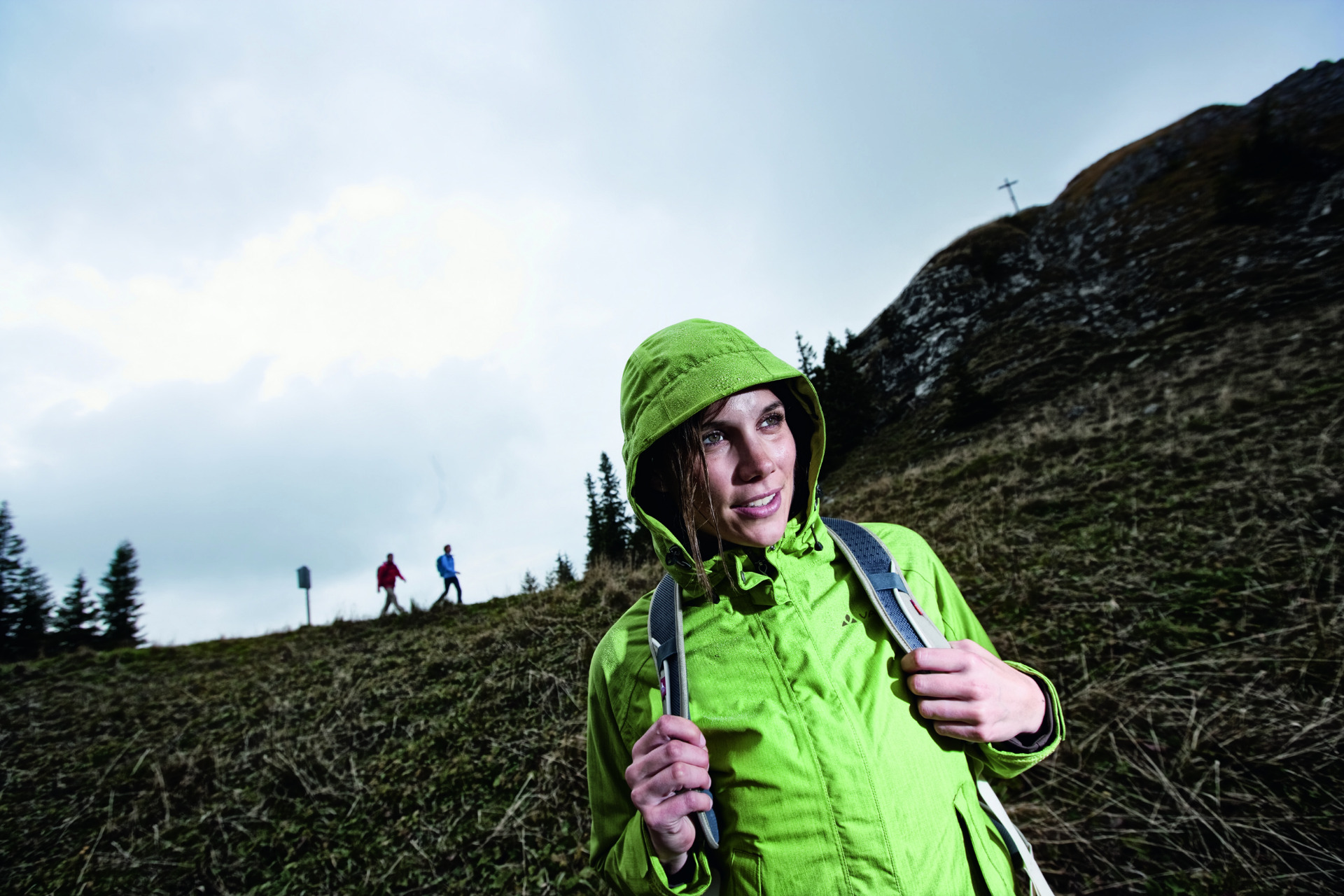
Highly functional, yet ecologically compatible
Environmentally aware material selection
The selection of materials and processing technologies is the first stage in the life cycle of a VAUDE product. We require the highest quality from our products as well as top performance.
VAUDE products should offer reliable protection from the elements, improve athletic performance and be your favorite gear, day in and day out, for years to come: as our motto says, Performance meets Ecology.
How you can protect the environment
In addition to technical design, the materials and technologies used to make the products play a key role in these criteria. At the same time, these functional materials and technologies also have significant direct and indirect impacts on the environment.
Here are some examples of how the environment can be protected with environmentally aware material selection:
- The cultivation of organic cotton causes less environmental damage than the cultivation of conventional cotton because fewer chemicals and less water are required - see "Organic cotton is better for people and the environment".
- The use of recycled materials reduces the use of raw materials and energy - see "From PET bottles spinning yarns".
- Use of raw materials, energy, water and chemicals is reduced when the material resources are efficiently manufactured and processed. In addition, less waste and wastewater is produced.
Predominantly synthetic fibers in use
Most materials used by VAUDE are made from synthetic fibers. These are derived from petroleum and processed with high energy, water and chemical costs, then made into fabrics, dyed and usually chemically treated again to ensure the desired technical performance such as water repellency and UV protection.
| GRI: | DMA Materials |
Responsible use of natural fibers
Natural fibers are not always unproblematic either: conventional cotton consumes enormous amounts of water for growing and processing.
Wool usually comes from sheep that are kept on an industrial scale - with negative consequences for biodiversity and a heavy impact on the animals’ welfare - see "Wool only from" happy sheep "".
Responsibility for the supply chain
A finished VAUDE product usually has no direct negative impact on the environment. Manufacturing of materials used for the products, however, can have negative impacts on the environment. First and foremost, this comes from potentially hazardous waste and wastewater - see "waste and wastewater".
Our upstream supply chain for materials is often located in production countries outside of Germany. As a company that has these materials processed, we remain responsible for ensuring that we also avoid harm to people or the environment in these locations.
Alignment with strict standards
VAUDE is one of the few outdoor manufacturers who rate their products in terms of environmental friendliness. We work with the bluesign® standard and rely on internal self-regulation such as the VAUDE Material Policy - see "VAUDE Material Policy". With VAUDE Green Shape we have created our own rating system for our products - see "VAUDE Green Shape".
Green Shape – your VAUDE warranty for greener products
The Green Shape percentage in the collection is growing steadily. The VAUDE label has established itself both internally (as an incentive for product development) and on the market (in stores and for our end customers) - see "VAUDE Green Shape".
The Green Shape criteria currently pertain primarily to processed materials. Our goal is to design products that are as eco-friendly as possible, throughout their entire life cycle. Therefore, we are revising the Green Shape criteria. The Higg Index is one of the tools we are using as a guide in the process. - see "Higg Index".
VAUDE material policy: balancing act for the Product Manager
While customers can identify the Green Shape label on products, VAUDE is also working "behind the scenes" with strict specifications for product development: in the "VAUDE Material Policy", VAUDE has voluntarily committed itself to using, "Best Available Technology" (BAT ) to eliminate the use controversial technologies and materials, and to ensure maximum traceability of all materials to their origin.
The "VAUDE Material Policy" is constantly being expanded and is continuing to gain importance for product development. Although the "VAUDE Material Policy" is generally successful, it remains difficult to find the right balance between "price" and "environmental friendliness". This balancing act is a challenge for our product management.
Increasing percentage of bluesign®
The bluesign® network is growing, even if this is not always expressed in products with the bluesign® label. To earn this label, the bluesign® criteria requires at least 90 percent of the total product to be made from bluesign® approved-materials. “bluesign® products” must be 95 percent bluesign® approved.
For us, it is often a success if we can change just one more component to bluesign®, such as a lining or a buckle. While this is insufficient for labeling, it makes the product a bit more environmentally friendly - see "bluesign® shares rise".
bluesign® has announced plans to revise its guidelines in order to cover more of the supply chain and to achieve clearer communication about the product than previously possible. We will follow these new guidelines - see "bluesign®: Worldwide strictest standard" and "Few opportunities for harmful substances".
So far, no specific analysis possible
Overall, we lack reliable data on actual material consumption and material efficiency for the supply chain outside of Tettnang-Obereisenbach. Without this transparency, no concrete evaluations are possible.
For the GRI indicator G4 EN1, in which we must specify the total weight of the materials and packaging for our products, we can only use the concrete figures from our Tettnang Obereisenbach location. - see the table below and the contribution "As little packaging as possible". The same applies to the GRI indicator EN2 - see "Spinning yarn from old PET bottles“.
In the future, we are planning to optimize the VAUDE product development database in terms of data transparency and ability to be evaluated. We publish the specific material efficiency indicators for our production site in Obereisenbach in the EMAS environmental statement (German).
Climate-neutral VAUDE products from Tettnang-Obereisenbach
Our waterproof bike bags, Packs ‘n Bags and “Made in Germany” mountaineering backpacks are produced in Obereisenbach. see - „Made in Germany“. Product components are die-cut from a variety of tarpaulin rolled goods. Logos are printed onto products, and small parts for buckles, attachment systems, etc. are prepared using a hot press.
The die-cuts are welded together using an emissions-free, HF welding process for a waterproof bond. Hardback panels – a VAUDE innovation – are riveted on to stabilize the bags. The last step is a stringent, final quality control and the bags are then packaged.
Material efficiency of 91 percent
The complete production in Tettnang-Obereisenbach and all products manufactured there is climate neutral. In the production of 108.5 tons of products, VAUDE consumed 119.5 tons of material in 2013. This is a material efficiency of 91 percent. Manufacturing waste, especially die cut waste of the tarpaulin materials, is currently still disposed of as residual waste.
All materials used in Tettnang-Obereisenbach consist of non-renewable materials. Packaging for all products that are manufactured at the Tettnang-Obereisenbach site, is already taken into account here, with 12.1 tons consumption. It consists mainly of cardboard.
Packaging material as an optimization issue
In addition to the materials from which the VAUDE products are manufactured, we consume packaging materials both at the Tettnang-Obereisenbach location as well as in the supply chain, especially cardboard and plastic foil. Both require resources such as raw materials, water and energy, and both are disposed of properly after use. Packaging remains an issue for which we are constantly reviewing opportunities for optimization - see the article "As little packaging as possible".
Consumables: As cheap as possible or eco-friendly?
At our Tettnang-Obereisenbach location, we also need a variety of materials for business operations: copy paper, coffee, light bulbs, computer equipment, office furniture, company cars and so on.
When purchasing supplies, we have already reached a high standard, but nevertheless tension between buying price and the environment continues to be an issue - see "99 percent recycled paper". An important milestone was the organic certification of the VAUDE cafe at our Tettnang-Obereisenbach headquarters in early 2014 - see "Creating Value Through commitment".






